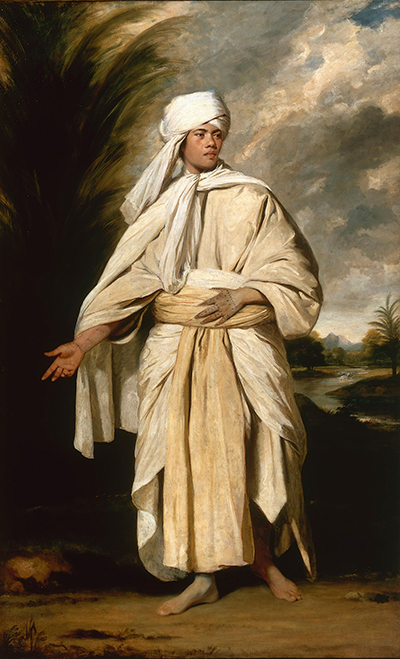 Buy Art Prints Now
Buy Art Prints Nowfrom Amazon
* As an Amazon Associate, and partner with Google Adsense and Ezoic, I earn from qualifying purchases.
Portrait of Omai, an oil-on-canvas painting, was executed in around 1775 by Sir Joshua Reynolds. The English artist wasn't commissioned to paint this portrait.
The painting remained in Joshua's studio until 1792 when the artist died. In April 1796, Greenwood auctioned the painting, and Michael Bryan, an art dealer, acquired it for 100 guineas. Michael sold the painting to Frederick Howard, an art collector who gained the title, 5th Earl of Carlisle between 1780 and 1782. The portrait was displayed at Castle Howard in Reynolds Room for two centuries. It wasn't seen at public exhibitions until 1954 when it was displayed at the Royal Academy.
The work is in the middle of a dispute between the Irish and Tate racing magnate John Magnier, who purchased the painting in 2001 at an auction. Joshua portrayed Omai in the painting as a foreign figure, in an idealised portrayal echoing the concept of Jean-Jacques Rousseau of a noble savage. Omai stands barefoot and is alone in the countryside Arcadian landscape with unusual trees that look like palm trees. He's wearing flowing "oriental" long, loose outer garments reaching his ankles; the white robes resembles a toga but possibly meant to be tapa cloth.
He is also wearing a white headdress or turban of perhaps Indian or Turkish inspiration, a style that's unknown in Tahiti. Omai's adlocutio pose was certainly inspired by the Pythian Apollo, a celebrated marble sculpture from the period of Classical Antiquity. It puts emphasis on the tattoos on Omai's hands and makes it classical allusions as well. The first time that Joshua first used the pose was in 1752 after he had visited Rome. He used it in Commodore Augustus Keppel's portrait.
The portrait measures 230 × 140 cm, and it was one of the twelve paintings that Joshua exhibited in 1776 at the eighth exhibition of the Royal Academy, to great acclaim. The portrait received praises and was said to be a good representation of the subject. Other paintings that Joshua exhibited in 1776 include Georgiana, Duchess of Devonshire's full-length portrait in the same idyllic setting. The NLA (National Library of Australia) holds a pencil preparatory sketch as part of the Sir Rex de Charembac Nan Kivell's collection. Yale University Art Gallery also holds an oval oil sketch. Johann Jacobé reproduced the painting as a mezzotint, which was published in 1780 by John Boydell.



